
BY JUDY CARMACK BROSS
Follow in the footsteps of the adventurous Americans who chose to live the glamorous 1920s on La Cote d’Azur where the sun stains the stucco and dances on the beautiful sea. —An invitation from the Alliance Française de Chicago.
Add beautiful art, extravagant villas, a cast of characters including artists, royalty, socialites, and those who embodied the phrase “Living well is the best revenge,” and even a spicy ménage a trois, and you have the 2020 Alliance Française Symposium. The latest installment of their Arts of France cultural series will be taking place this year virtually on September 10, 18, and 25 at 11:30 am.
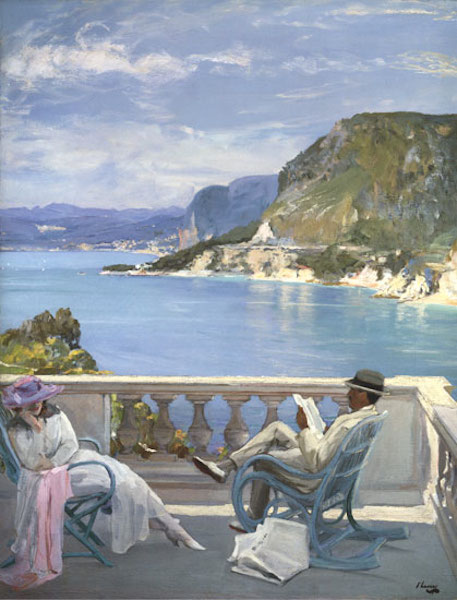
John Lavery, On the Riviera.
Co-chairs Myriam Bransfield and Mary Blust, and Alliance Francaise Program Manager Conery Hoffman, not only choose the most enticing program titles in town but also deliver au courant and fascinating speakers. Mary Ellen Connellan is the non-profit’s executive director and Aimee Laberge its director of programs. Early in the program planning the group consulted with the Art Institute’s Gloria Groom, an expert on French culture and a member of the steering committee.

Myriam Bransfield.
Bransfield shares, “It is important to share the Alliance’s cultural assets as well as let everyone know that we are alive and well during this pandemic, still an integral part of the community. I am swept away by Conery Hoffman’s work on the project and his positiveness.”

Conery Hoffman.
Both Bransfield and Hoffman share a love of Cap Ferrat: “The Alliance decided to make it a year of the South of France. The theme for our virtual Gala on November 13 will be Un Air de Provence. For me, there is no more beautiful beach than the Plage Paloma in Cap Ferrat. From Marsailles to Monaco, the whole area is magical,” says Hoffman.
Bransfield agrees: “I have heard from many friends who have visited villa of Nancy and Glen Traylor, who are Alliance supporters, that there is no more beautiful sight than the harbor at Cap Ferrat, lit for the evening and with the magnificent boats that anchor there.”
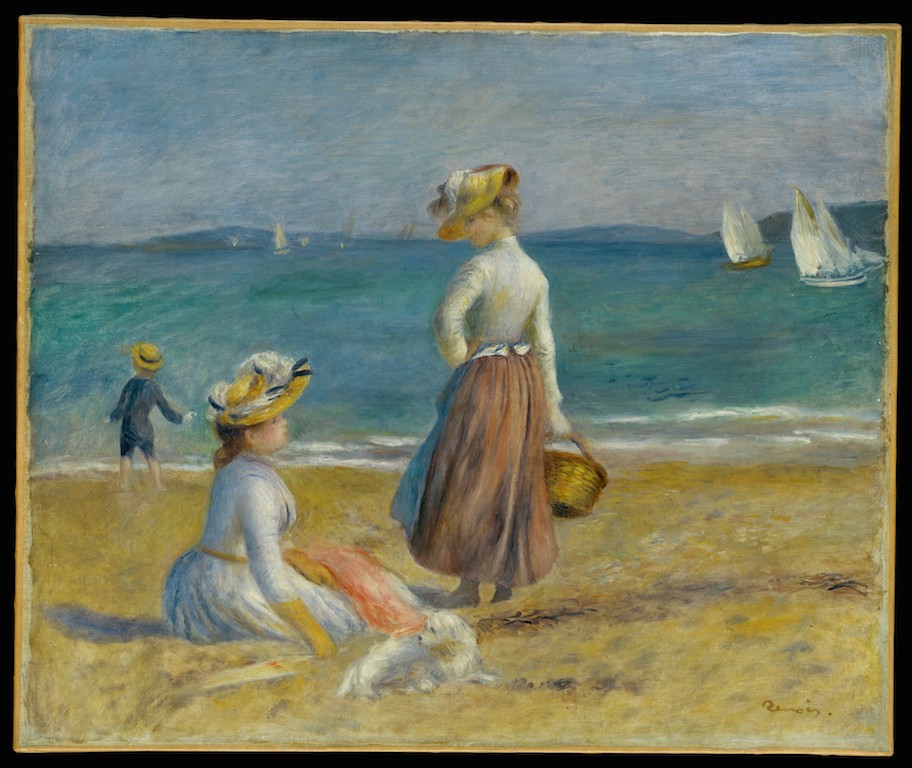
Auguste Renoir’s Figures on the Beach, 1890. Part of the collection of the Metropolitan Museum of Art.
Sarah Coffin, an independent decorative arts and design consultant and a curator and lecturer at the Cooper Hewett, opens the series with The Cote d’Azur as an Artistic and Social Swirl: The Radiating Worlds of the Ballets Russes, Picasso, the Gerald Murphys, the Cole Porters and Friends on September 10.
Coffin says that color ties together the artistic genius of the Murphys, forever associated with the Calvin Tompkins biography Living Well is the Best Revenge. “The very name Cote d’Azur has perhaps defined the color azure, as being that of a clear blue sky, that now suggests the Mediterranean,” she says. “Although popular since the late 18th century as a winter health resort, the addition of fast train service, Le Train Bleu, and the roadster car, both in the 1920s, added a new coterie of chic and modern lives in the summertime, some of whose creative activities spread around the world.”
She continues, “The strong turquoise water, the white sands, the deep green pines provided a backdrop of color for Gerald and Sara Murphy to use. They both appreciated color and it showed the exuberance of the way they led there lives there with friends who would join them from Paris in the summertime. Artists in the widest sense of the world flocked to their villa on the beach. Chicagoan Rue Carpenter was a close friend of theirs. The Murphys often asked friends to help paint damaged scenery from the Ballets Russes, which was headquartered in Monte Carlo, all in the big blasts of color that Russian artists loved. What a contrast to the Edwardian era, which was whites and diamonds. Color came across even in colored gemstones.”
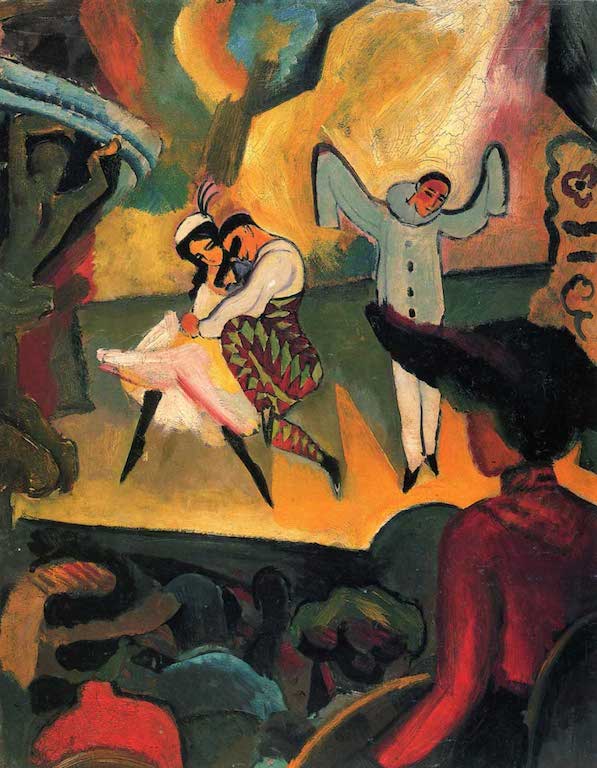
Ballet Russes by August Macke, 1912.
A talented painter who begin in the style evidenced by the works of his close friend the painter Fernand Leger before he saw his works, Murphy invited many artists to be their guests, including refugees of the Russian Revolution. Sara, an excellent draftsman as well, loved to express herself through new beach fashions and marvelous table settings. They were the consummate hosts. While their good friends Cole and Linda Porter loved great luxury, the Murphys were more about a simpler life and entertaining in a very relaxed way.
“Sara realized one Sunday that the flower markets would be closed, so she went to a nearby town and bought lots of children’s toys and put them on her tables for the dinner party that night. Everyone loved it,” Coffin says.
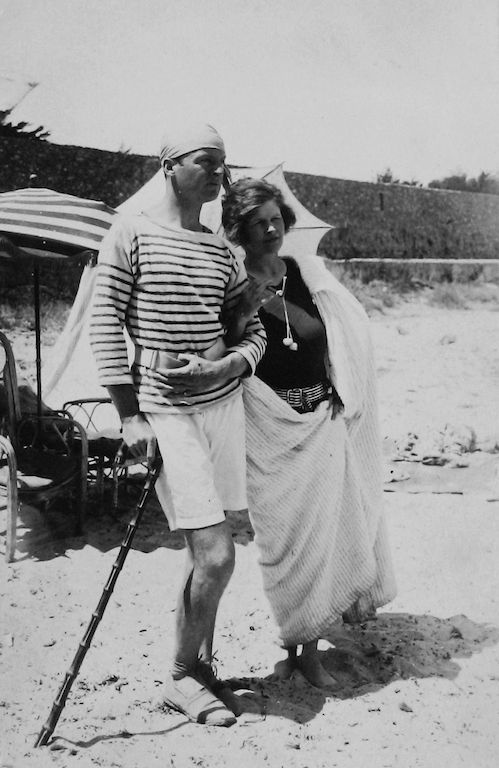
Gerald and Sara Murphy at Cap d’Antibes beach, 1923.
As curator at the Cooper Hewett and also at the Cleveland Museum of a show on the Jazz Age, Coffin heightened her interest in Gerald Murphy and his art: “In the 1920s Americans developed a great interest in mechanisms and hard edges. It was a modernist statement. Stainless steel had been used in World War I, and it then found its way to silverware,” she explains.
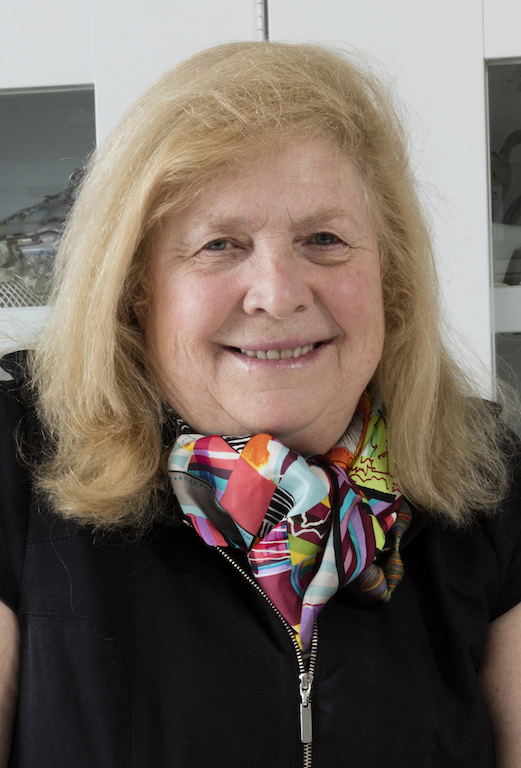
Sarah Coffin. Photo by Matt Flynn.
The following week, on September 18, architects Linda Searl and Joseph Valerio will reveal Love, Jealousy and Death at the E-1027 House, Eileen Gray’s 20th Century Masterpiece on the Cote d’Azur on September 18.
Irish born Eileen Gray, daughter of Lord Gray and Lady Jane Stewart, moved to Paris in the late 1920s to study art and design. She became a celebrated designer of furniture and decorative arts, particularly intrigued with lacquer, and eventually opened her own shop in Paris. She moved to Cap Martin where she designed a house and landscape for herself and her lover, Jean Badovici, in the International style. The name of the E-1027 House is an anagram using their initials: E is for Eileen, J is the tenth letter in the alphabet, B is the second, and G is the seventh.

Joe Valerio.

Linda Searl.
Valerio and Searl describe what they call “a passion play,” which also involves architect Le Corbusier, one of the 20th century’s most famous architects who spent time in Chicago particularly in the 1930s. He ultimately drowned while swimming off the coast of Cap Martin in 1965.
“Eileen met Le Corbusier through her relationship with Jean Badovici,” they explain. “Gray selected the site in Cap Martin, and built the E-1027 house for her lover, Badovichi. She admired Corbu’s architectural work, such as the Citrohan House, but questioned some of his theories, such as his conviction that ‘a house is a machine for living.’ ”
Gray spent a great deal of time finding the site, overlooking the Cote d’Azur and its beautiful blue waters. It afforded a good deal of privacy, with very few buildings to obstruct its view high above the water.

The E-1027 House. Photo by Manuel Bougot.
The house was completed in 1929, though she broke up with Badovici not long afterwards, leaving the house never to return. In 1937, Corbu spent a few days at the house with his wife and Badovici. After the visit he wrote her a letter filled with compliments about the design, acknowledging her as the designer. However, after the war, he became critical of the design in a series of letters to Badovici. During this period academics began to credit Badovici with the design, with the help of Le Corbusier. He never corrected this misrepresentation and appeared to become jealous that a woman could conceive of and build such a masterful piece of architecture.
Sharing what fascinates him most about the story, Valerio says, “The human side is very poignant, especially since Eileen was so independent, brilliant, and one of very few women of this time whose work was so recognized. She clearly was the designer of the house and its contents. She regretted the idea that Jean Badovici would claim the design as his own, and that Le Corbusier would not publicly refute this claim. I have admired her for a long time, and it was a dream come true to be able to visit this house.”
Valerio, a native of Rogers Park who grew up in Wilmette, and Searl live in Ukranian Village and together designed their Ohio Street house. Searl, a partner with Searl Lamaster Howe Architects, was selected by Architectural Digest as one of the best architects and designers of the year 2004.“Our house is a contrast in volumetric forms, distinctly Chicago, both muscular and sculptural,” Valerio says.

Mitch Owens. Photo by Gabriel Langdon.
Concluding the series, Architectural Digest’s Mitchell Owens will speak on September 25 on The Millionaire, His wife, and His Lover: The Menage a Trois (and High Style) of Patricia and Arturo Lopez-Willshaw and Baron de Rede. We will be telling you more about this program in our September 20th issue.
***
Admittance for each lecture is $25. To learn more or to secure your spot, visit af-chi.org or call 312-337-1070.





